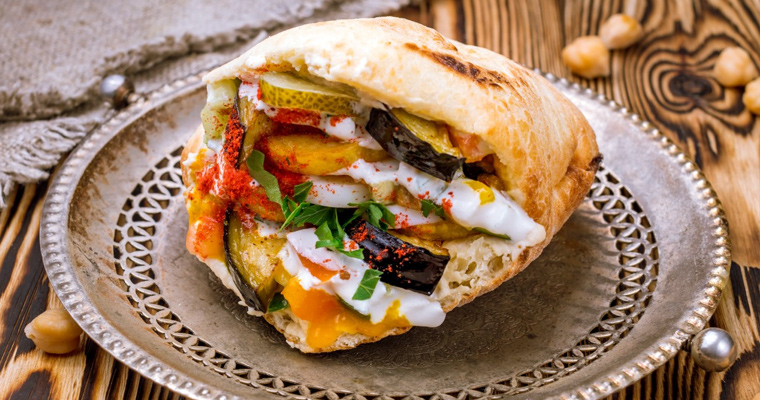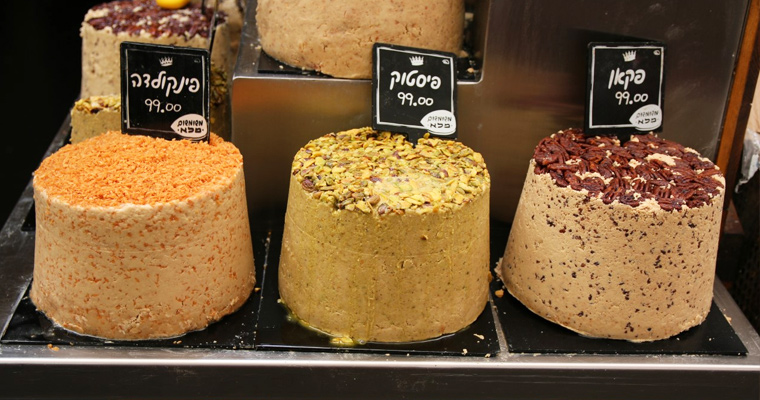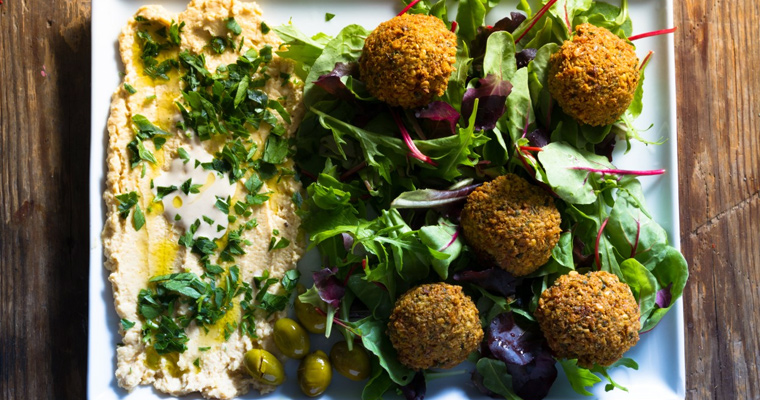Open Sesame: The Secrets of Tahini In Israel
Lee Saunders 30/05/2019
You will find it lovingly embracing shawarma, drizzled over roasted cauliflower, nestling on top of a tomato salad or puddled in the middle of hummus. When you’re in Israel, you will discover the real tahini. Far from the thick paste made from ground sesame seeds found on supermarket shelves abroad, tahini in Israel is a creamy, silky sauce that has become the king of pastes, a rich spread long treasured in Middle Eastern cooking.
While tahini dates back several thousand years, with sesame seeds cultivated in India since 5,000 BC, it traces its presence in the Levant region to between 3-4,000 years ago. It came to Israel via the country’s Mizrahi population — Jews from Middle Eastern countries, such as Lebanon, Egypt, and Iraq. And of course, there was also the influence of the country’s non-Jewish Arab citizens and neighbors. Today, it is as important here in Israel as ketchup is to the Brits or mustard to the Americans, but it has also increasingly captured taste buds worldwide.
According to a recent report from Persistence Market Research, the global tahini market is growing by more than 5% each year, and Israel has emerged as one of the world’s leading producers of tahini. In 2016, tahini exports to the U.S., Italy, Australia, among others, brought over USD 30 million to Israel, and it is not hard to see why.
Dan hotels in Israel – Book now >>
“Although high in calories, it is also nutrient-dense and a great source of calcium, iron and protein and is extremely healthy,” said Sarit Orenstein, who, together with her husband, run a small factory, Melachet HaTochen. From the millstone straight to the jar, these tahini connoisseurs have been producing raw tahini and making halva, sesame milk and sesame oil for many years, recently taking their operation from the heart of Tel Aviv’s famous Levinsky spice market to a kibbutz in Israel’s Jordan Valley.
In Israel, tahini is often whisked with iced water, thinned with lemon juice and flavored with crushed garlic and a sprinkle of parsley. But it is the innovation that sees the sauce used in an intriguing mix of dishes. No longer just a major component of hummus, which you can read more about in a recent blog, it is also a key part of Israeli breakfasts, scrambled eggs, roasted eggplant, salad dressings, dips, a popular topping for shawarma, falafel, sabich, and even found in desserts, such as halva and ice cream.
In such a vibrant culinary scene, you have a wide choice of high quality venues around the country, serving up the most delicious tahini in multiple ways. Among them is the legendary tahini-based tapas south Tel Aviv bar Hatahinia, offering tremendous fish, vegetarian and vegan dishes that play with creative ways to incorporate tahini, such as sea bream baked with a tahina pistachio topping, tomatoes and onions that will simply transport you to foodie heaven. Do not leave without swinging by the casual Miznon in Tel Aviv and Jerusalem, a must-try for tourists and a perfect setting to get acquainted with locals and street food, such as the mouthwatering steak and egg in pita covered in tahini or the roast cauliflower, transformed with a drizzle of their special tahini. The Hummus of Tahini restaurant, close to the Jerusalem’s Sacher Park and northwest of the Dan Panorama Jerusalem and King David Hotel, offers some of the most popular tahini dishes around and even celebrates a Hummus Day every March!
Dan hotels in Jerusalem – Book now >>

Tahini pairs beautifully with Sabich – a Jewish-Iraqi and Israeli sandwich of fried eggplant and hard boiled eggs.
Tahini also pairs beautifully with sabich, a Jewish-Iraqi and Israeli sandwich of fried eggplant and hard boiled eggs. All of these are eaten in soft warm pita breads or larger laffa wraps, a larger Iraqi pita, and eaten with countless fresh vegetables and varieties of hummus. The ‘hole in the wall,’ Sabich Tsernikovski is widely admired as one of the best places for rich, spicy sabich in Tel Aviv, made all the more delicious with its tahini. Falafels, those deep fried patties made from ground chickpeas, are also the perfect match for tahini. There are many contenders for the falafel and tahini crown, including Falafel HaZkenim in Haifa, which has been around forever and is highly regarded among falafel connoisseurs, with lines out the door for its fluffy pita stuffed with falafels in the tastiest tahini. Tel Aviv’s 4 Taamim offers four kinds of falafel, including falafel filled and coated sesame toasted sesame seeds, of course decorated with tahini.
Dan hotels in Tel Aviv – Special online rates available now >>

In terms of desserts – our focus turns to the Halva. A picture of Halva in several flavours by the ‘Halva Kingdom’ store.
And when we look at this sesame seed craze, in terms of desserts, our focus turns to halva. How is it related to tahini? It’s a flaky, tahini-based confection made with sugar or honey…. and tahini. At Yom Tov, a family-run delicatessen on South Tel Aviv’s Levinsky Street, you will find loaves of dry sesame halva, studded with walnuts, pistachios, or almonds, while you can also find halva on Tel Aviv’s Carmel Market. In Jerusalem’s Mahane Yehuda market, you will find Halva Kingdom, one of the pillars of the market with more than 100 types of halva, the sesame treat that can be sampled on the premises. Since its opening in 1947, its famous halva recipe comes from Morocco and use Ethiopian Humera sesame seeds. Here you can taste tahini, as it is manufactured on the premises in front of customers, using the brand name King of Tahini, and, as sauces go, tahini is certainly royalty.


